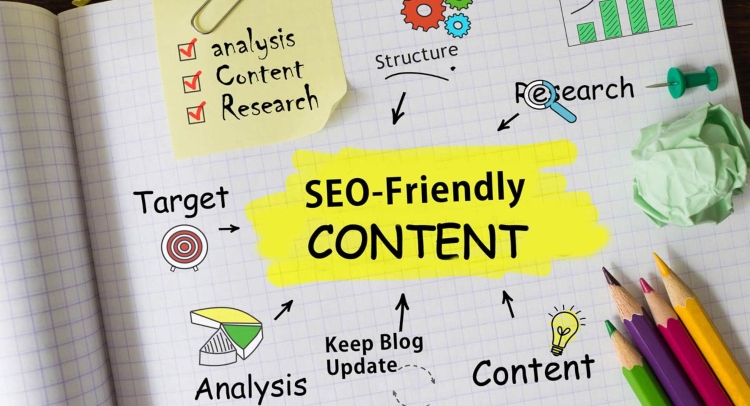The purchasing power of social consumers has never been higher than it is right now. According to a recent study, Instagram and Facebook have quickly emerged as two of the most important social media channels for online product research and online purchases. The fact that customers have become used to the concept of social commerce is fantastic news for businesses of all sizes, from start-ups to those with decades-long histories. Despite this, it does not mean that successful social selling is assured.
In fact, one of the most challenging aspects for marketers is finding a way to coordinate their activities on social media with the organization’s goals as a whole. For example, if you are having problems creating a return on investment or if you would want to extend your client base using social media, you must examine your social conversion plan. In this guide, we will go over the tactics and tools that may assist you in increasing the percentage of people that convert after visiting your social network pages. You may use these suggestions to attract more prospective customers through social media. It does not matter where a potential customer is located in your sales funnel.

What are Click-Throughs?
Click-through refers to the action of going to a website after clicking on a link to go there. This is one meaning of the term. In addition, the term “click-through” refers to the action of followers of your social media account clicking on a link you have shared with them. Because of this, it is very necessary to engage in conversation with the people who follow you on social media and provide information that is beneficial to them regularly.
You can only attract traffic to your website from other means, such as search engine results pages (SERPs) or from people who are already familiar with your business if you do not have access to social media. Therefore, by optimizing the information you publish on social media, which includes all of the links to your website that are shared across social media, you may be able to boost the number of leads you get and, ultimately, your sales.
Importance of Organic Click-Through Rate
The click-through rate refers to the percentage of users who interact with an organic search result by clicking on the link provided by the search engine after seeing it. More specifically, your website’s URL will be the final product. A great number of additional aspects contribute to it, despite the fact that ranking position is the most significant feature (the more people who read your material, the greater the possibility that they’ll click), and the reverse is also true. If you prioritize organic click-through rates, you may be able to improve your page’s ranking on Google. When a URL is visited more often, the algorithm gives the phrases included within it a greater weight when calculating the relevancy of results for similar searches.
However, the most effective social media accounts continue to pay attention to optimization details, even though some businesses can make their social media marketing seem uncomplicated. Putting in the effort to optimize social media may pay off in several ways, but the top three are as follows:
- Create a process that ensures the production of high-quality content, which will increase the likelihood of achieving the outcomes you want (relative to your brand)
- Conduct an analysis of the return on investment and overall performance of your social media marketing (think: sales, brand awareness)
- By increasing your content’s reach and visibility, you may encourage a greater number of people to engage with it (clicks, traffic and so on)

Top Ways to Boost your Click-Through Rate
- Create a pattern for your interactions on social media and stick to it
Because of social media platforms’ reach, it is now feasible to amass a fanbase that spans the whole planet. On the other hand, this seems to provide a new challenge in terms of communication between individuals. Anyone who has tried to arrange a webinar or a social media hangout will relate to the fact that communication across time zones may be difficult.
However, with the assistance of several fantastic tools for social networking. Your activity on social media can and should be scheduled in advance to make the most of peak use times and the varying local timings of various users.
The trust of others may be gained by consistent behaviour. Therefore, it is crucial to cultivate the sort of loyalty and conversion rates that will keep people coming back for more by building trust with your audience via continuous weekly contacts (either in person or through automated ways). These interactions may take place either manually or automatically.
With the assistance of a variety of scheduling mobile applications available for purchase, users of social networking platforms like Facebook, Twitter, and LinkedIn can program automatic updates to their profiles. It’ll automatically do so if you want to arrange articles or snippets at the ideal period for connecting with your audience. This might be useful if you want to. Compared to other social media management solutions, the capability to plan material across several accounts and then post it with a single click is a significant benefit.
- Use Images on your Website
Visuals are a fantastic tool for quickly and easily conveying the meaning behind your concept. According to the findings of several studies, people are more interested in and pay more attention to content that contains visuals. For example, after using an image in a social media post, click-through rates increased by 18%, according to data provided by Buffer.
Instead of merely posting pictures on Facebook, LinkedIn, or Google+, you should always include a link in your status updates. This behaviour is frowned upon by social media sites, with Facebook taking a dim view of it. Of course, it’s good to have more likes or comments on an image post, but you want more people to click through to your website.
A fantastic strategy for drawing more attention to the content of your article is to choose a picture that is relevant to the subject matter and works well with the text. You, as a restaurant, need to put your best dishes on display using images of the highest possible quality. Choose an image that represents something significant to the audience that you are writing for.
If you’re attempting to sell anything, you should obtain a decent picture of the product. If you’re going to be generating content for your blog, you have the option of using a stock photo. Expense is not required in any way. Unsplash, Pixabay, and Pexels are three excellent places to go if you want to get free stock photos of high quality without breaking the bank.
- Develop Powerful Meta Descriptions
The organic click-through rate may also be increased by writing interesting meta descriptions. The portions of your content shown in the search engine results underneath your title tag are referred to as excerpts. A decent meta description should not only describe the content of your website but should also encourage viewers to go through your post so that they may read it.
Your keyword research will prove to be beneficial in this instance. Make use of them to show readers that the information you have supplied answers a question to which they have been attempting to find a solution. Furthermore, you may further enhance the quality of your meta description by, in addition to these methods:
- A meta description is recommended not to exceed 160 characters to avoid confusion and go right to the point. Because of this, you must modify yours to correspond specifically to the corporation’s necessities.
- Wording that has an impact: Use persuasive and captivating language, such as emotionally charged phrases, to improve the percentage of people that click through to your website.
- Your organic click-through rate will increase if you undertake half the effort of your competition by responding to your visitors’ questions in the meta description of your website.
Instead of using the meta description as a place to merely list product features, consider using it as a chance to sell prospective buyers on your content and the solution it provides. If possible, include a call to action.

- Maximize the Effectiveness of your Content Strategy to Get the Most Out of it
Businesses have a wealth of alternatives at their disposal in terms of the material that they may post to their social media accounts. On the other hand, you shouldn’t consider your content strategy to be a blank slate. When you have a detailed strategy in place, you can begin the content creation process much more quickly. The first step in improving your content marketing is to:
- Determine the resources that you will need to complete your schedule (text posts, images, videos)
- Establish a consistent routine for the publishing of your work (including how often to post, when to post, and how many needed pieces of content per week)
- Find out which content may be shared on several different networks and which ones need to be published individually on each site.
Keep in mind that the optimization phases of your content strategy are something that needs to be fine-tuned. After analyzing the data, you could find that you need to speed things up or slow them down, depending on your learning. The material presented here could function well as a basis for additional investigation.
You should ensure you aren’t posting incoherent ramblings, perhaps the most significant thing. Here is where a handy tool comes in handy, monitoring everything you share across all the networks and keeping track of it. You can rapidly identify schedule gaps and locate new locations to cross-post material if you keep your whole content calendar and creative assets in one area.
- Keep the User Experience Consistent and Mobile-Friendly across All of your Landing Pages
Because mobile e-commerce is becoming more popular, businesses need to devise methods to communicate with customers while travelling. For a firm to succeed in social media marketing, it must deliver a positive user experience. For example, Instagram users navigate by swiping and tapping from point A to point B. Therefore, each social landing page must adhere to the same uiux design principles, emphasizing simplicity and minimizing distractions.
First, check to see that visitors to your social landing pages don’t have any trouble getting there. For example, the profile description section of an Instagram account may now contain a link that can be clicked to take people to the user’s website. Because of the way their landing page is designed, it is clear that the company is interested in boosting the number of individuals that sign up for their service by using various forms of social media. In addition, customers who use the website from their mobile devices may see that they are not being forgotten since the site is simple to navigate utilizing movements such as swiping and scrolling and has large and prominent buttons.
If you want to attract clients from social media sites like Instagram and Facebook, you must have a landing page optimized for mobile device usage. In addition, you can directly target mobile users and gain insight into social consumers’ behaviour. Putting your landing pages through a quick Google mobile test is a simple approach to determine whether or not they meet the requirements set.
You might use several tools to do split tests between two different versions of your website to determine which is more successful in converting visitors into customers. These tools also offer mobile-friendly landing page templates that you may use as a starting point if you’re having trouble visualizing what a finished social landing page might look like.
- Find the CTRs with the highest and lowest averages.
To increase the organic click-through rate of your website, it is essential to determine which of your existing pages are successful and which are not. This will offer the pages, titles, and content variants that perform the best and those that perform the worst. Using Google Analytics, you can easily obtain all of this information. In addition, the report will provide helpful statistics such as the number of clicks, impressions, CTR, and average position in the search engine results pages (SERPs). In addition, it provides useful statistics such as the session duration, the number of page visits, and the conversion rates.
Step 1: To determine which Google searches bring up your current pages, go to “Acquisition” first, then “Search Console,” and lastly “, Queries.”
Step 2: You can see the current organic CTR for each page using Google Analytics.
Step 3: Following that, you may inspect your landing pages by using the same menu.
By comparing them, you may use any of these reports to identify which techniques are successful and which ones are not. For example, if you want to boost the traffic that comes to your website via organic means, you may want to revisit earlier sites and content and make some adjustments.
Conclusion
No matter your industry, you can always improve your skills and knowledge. But, in the end, the problem that inspired your audience to visit your site is the one that is of the utmost importance to them. They are not particularly interested in the slick style of your website, the intriguing title, or the banner adverts that capture people’s attention.
You can’t afford to do anything while your competitors use one of the marketing techniques with the highest return on investment while you sit back and do nothing. Make use of social media to build your professional network and discover new prospective consumers. Given that social media marketing is one of the most cost-effective marketing tactics now accessible, it would be a shame for your business not to use it. It is crucial to clear your calls to action and deliver something of true value to your audience if you want to improve the percentage of people who click through to your website from social media platforms.
About the Author

Prashant Pujara is the CEO of MultiQoS Technologies, top Flutter App Development Company in USA with experience in on demand Marketplace App Development Solutions where you can hire iOS developer for your company. He oversees the company’s commercial and delivery operations, as well as strategic planning and strategy.


